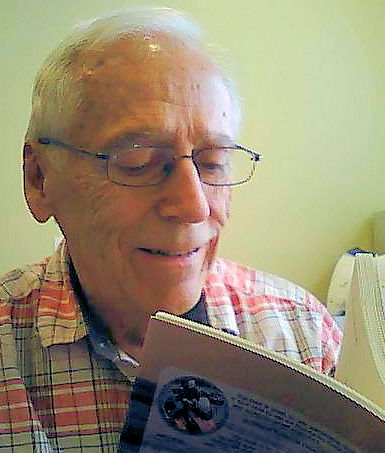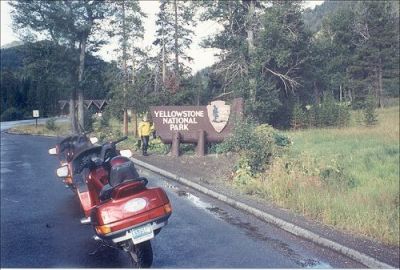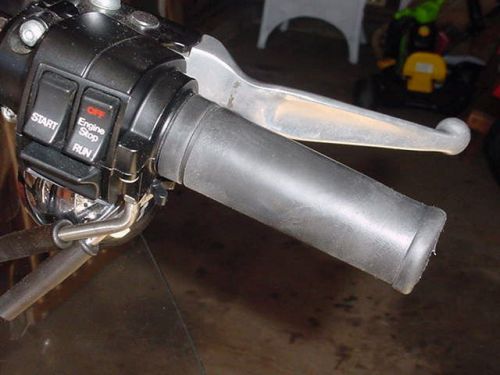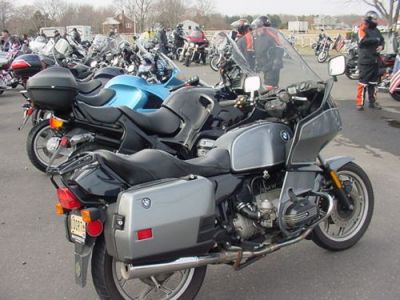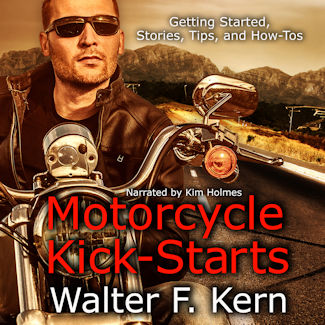10 Motorcycle Myths Click for an updated version of 10 Motorcycle Myths. 8. Motorcycles are only good for short trips and commuting
This seems to be deeply ingrained in the minds of the general public. Whenever I talk to neighbors or strangers while on my bike, they invariably ask, "How far have you been on it?" When I reply that I've ridden cross-country to Yellowstone National Park from New Jersey (see picture), they seem quite surprised. I got the same reaction last year when I rode to Indiana for the Gold Wing rally, then home to Illinois for a visit, followed by a return trip through Kentucky, Tennessee, and North Carolina to attend our forum rally at Maggie Valley, and a final trip back to New Jersey. That trip was over 3000 miles, took 17 days, and involved a few skirmishes with the hurricanes that ravaged the USA in late 2005. Motorcycles don't look like they would take you long distances. There isn't much room to take luggage. Many riders go two-up and that further decreases storage space. Traveling long distances on a motorcycle is called touring. The fact is that anyone can travel almost anywhere on any kind of motorcycle. Bill Stermer in his book, Motorcycle Touring and Travel, states, "The bike on which most people choose to tour tends to be the one they own at the time." With the increase in reliability of bikes, taking a long tour is nothing special. Bikes have low maintenance engines, shaft drives, adjustable suspensions, fairings, windscreens, and luxury items like stereos, CBs, and cruise control. Most bikes now pull trailers too. Forget about short trips. Go touring. 9. Never Use the Front Brake Unless You're an Expert Rider
Beginning riders are taught in the Motorcycle Safety Foundation (MSF) courses that effective braking is accomplished by using both front and rear brakes together. There is nothing to fear in using the front brake. Most modern motorcycles have rear disc brakes. These brakes stop faster, wear longer, and won't fade as much. The rear disc brakes are controlled by the brake pedal. Beginners often rely only on the rear brake since they can easily activate it using their right foot. Many have been erroneously taught that the front brake, activated by the right hand brake lever (shown here), is to be avoided. However, remember that more than 70 percent of the stopping power of a bike is in the front brake. Get used to using the front brake and the rear brake together. As you progress in your training, you will learn how to use both the front and rear brakes to make fast controlled stops. There are also special situations where different uses of the front and rear brakes are required. When you attend the MSF classes, these situations will be covered. Since many beginners use the rear brake too much, they often lock them up during panic situations and skid the rear tire. Remember that if you find yourself in a rear wheel skid, DO NOT release the brake pedal. Ride it out. Releasing the pedal will often cause a high side incident. This is the opposite of the advice given for a front-wheel skid with the front brake locked up (release the front brake). 10. BMW Only Makes Cars
Everyone has heard of Harley-Davidson. Maybe that's because they've been making motorcycles since 1903. However, there are other old motorcycle companies that few people know about. Whenever I stop my motorcycle, I seem to get into conversations about motorcycles with people just walking by. Many times, they'll say, "I used to ride an old Harley but gave it up when I got married." Sometimes people don't know what kind of bike you're riding. Often they guess and say, "Is that a Harley?" Of course, most Japanese cruisers do look a lot like Harleys and even sound like them so it's confusing. Many times I talk about how I got into riding. My brother-in-law was into BMWs and I was exposed to them when I visited him. The next question is usually, "I thought we were talking about motorcycles. What's a BMW got to do with it." Then I realize that they don't know that BMW also makes motorcycles. The fact is that BMW made the R32 model in 1923. They hadn't even thought about making cars yet. That didn't happen until 1928 with the Dixi model. The first "real" BMW car, the AM 4, was produced completely in-house in 1932. The first BMW R32 motorcycle used a flat-twin engine quite similar to the engines used by BMW for the next 75 years. BMW motorcycles are referred to as Beemers. BMW cars are called Bimmers. Although BMW only has about 3-4 percent of the motorcycle market, all riders are familiar with BMW and many are devoted to the brand, as shown in the picture.
|
||||||||
© 2014 Walter F. Kern. All rights reserved.
|
| You CAN Ride a Bike |
| 10 Ways to Be Safe |
| Latest Pictures |
 |
| Pictures of the Week |


